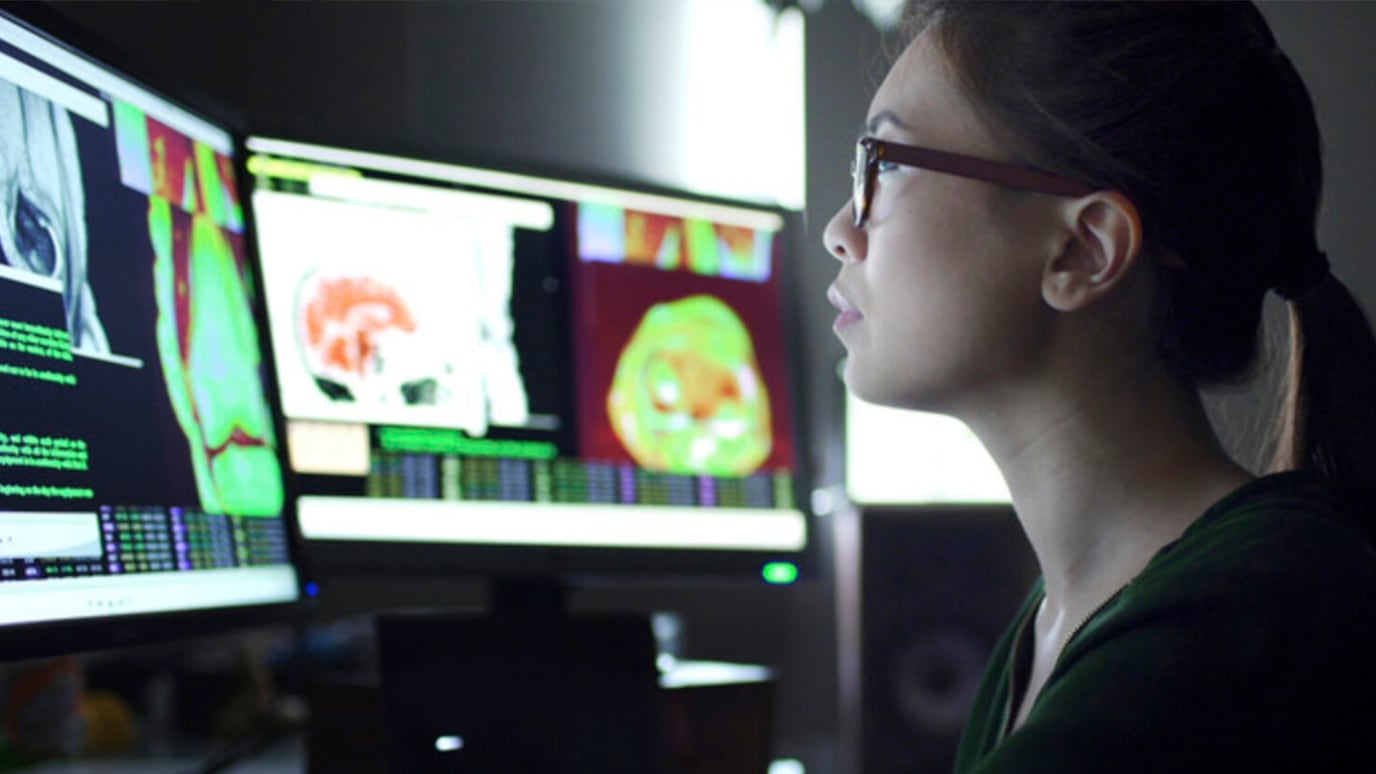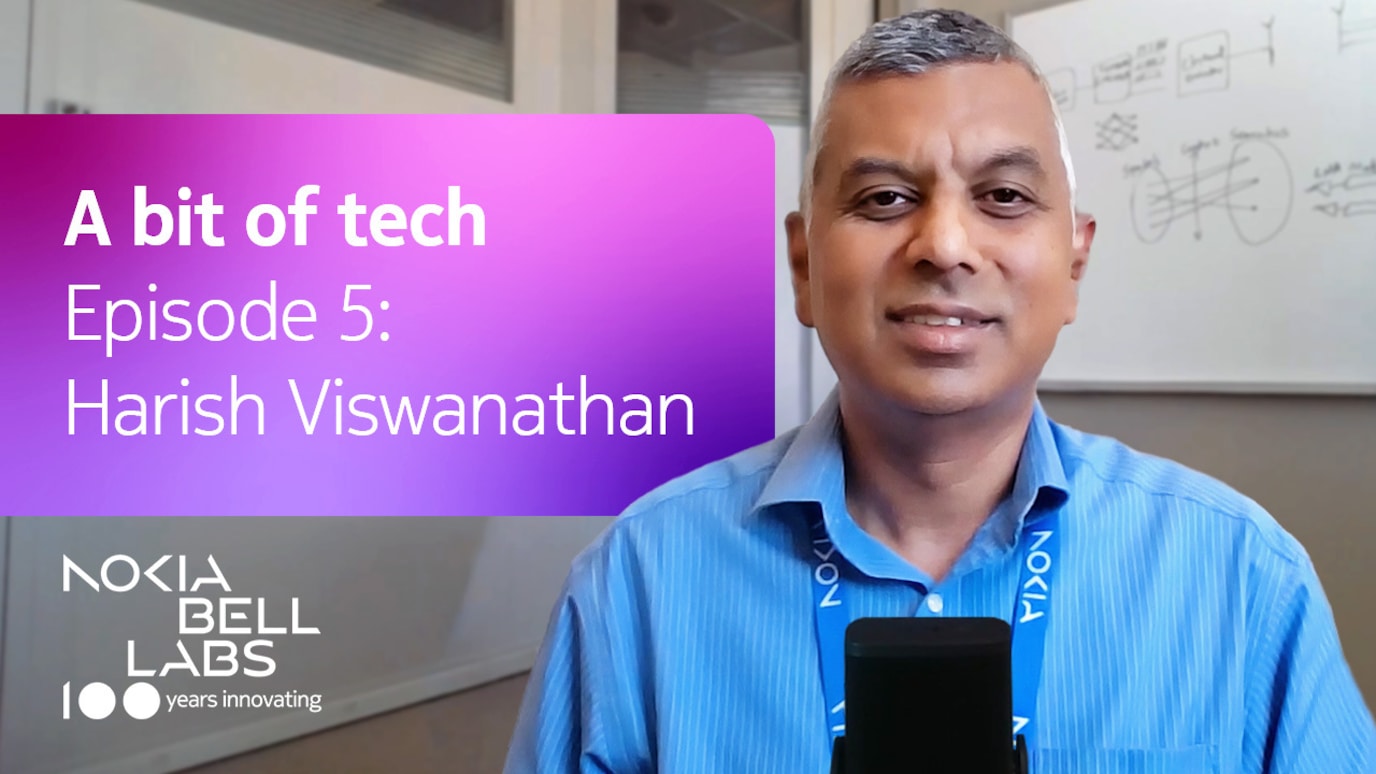Astranu project overview
Honey I shrunk the OCT
Optical coherence tomography (OCT) is a rapid 3D imaging technique that allows doctors to see inside the body with high resolution using beams of light. It is currently the gold standard in eye imaging and is a highly promising diagnostic tool in areas such as cardiology, dermatology, and otology where OCT can provide doctors almost instantaneous detailed structural and functional views into the body. Unfortunately, the high cost (~$100k) and size (medical cart) of OCT systems make it out of reach for most people, with systems primarily limited to large hospital settings.
At Nokia Bell Labs we have leveraged decades of research in integrated optoelectronics technology to create the world’s first integrated OCT (iOCT) system. This technology - which was originally developed to shrink the size, cost, and power consumption of telecom equipment to allow for dense high-speed transceivers that support the global internet - is now making OCT an affordable technology for widespread use. Our integrated beam steering mirrors, chip-scale interferometers, and co-packaged photodetectors have reduced the size of OCT down to a chip measuring ~1cm x 1cm, and at just a fraction of the cost of traditional systems. Our ongoing research aims to continually improve the speed and imaging quality of iOCT systems, while finding ways to continually reduce size and cost.
Project details
Telecom meets Medicine
Otoscopes – those little magnifying glasses used to look into the ear – are the current standard of care for diagnosing problems with the ear but don’t allow doctors to see past the eardrum without surgery. We have created an iOCT-enabled otoscope that allows for direct real-time observation of the middle ear and parts of the inner ear. This allows us to generate 3D structural images that give clinicians almost instant access to the middle ear to observe a wide range of ear health problems. In addition, our iOCT device can quantify the vibrational ability of the middle ear, allowing for analysis of conductive hearing loss without the need for traditional subjective audio tests.
We are currently working to launch a start-up to take this revolutionary new technology to market.
Looking under the hood
Our core iOCT engine is comprised of a planar lightwave circuit (PLC) which is a silicon chip with silicon oxide waveguides etched on top. The PLC contains the interferometers and splitters used as part of the core optics of any OCT system and is what allows depth information to be calculated. A tiny ~1mm MEMS mirror steers light from the PLC chip onto the patient, scanning the laser spot in two dimensions. Finally, reflected light is recaptured by the PLC and fed into heterogeneously integrated photodetectors that convert light into electrical signals that can be amplified and digitized for image reconstruction and analysis. Our otoscope OCT system also includes a speaker for stimulating the middle ear and a CMOS camera allowing clinicians to get a real-time ‘normal’ 2D image of the ear.
Integrated optoelectronics enabling the future of sensing
We see sustained research into integrated optoelectronics as key to continued miniaturization and cost reduction that will make advanced optical sensing technologies commonplace in the future, giving us unprecedented real-time understanding of our physiology and our surrounding environment. Check out some of our related research building towards this future:
Project members
APA style publications
- Samanta, B. R., et al., "Phase-sensitive OCT on a silicon photonic chip: characterization and functional ear imaging," in Biophotonics Congress: Biomedical Optics 2022. (PDF)
- Samanta, B. R. et al. "Low-cost electrothermally actuated MEMS mirrors for high-speed linear raster scanning," Optica 9, 251-257 (2022). (PDF)
- Samanta, B. R. "Low-cost Electrothermally Actuated MEMS Mirrors for High-Speed 3D Laser Scanning Applications." 2021 IEEE Photonics Conference (IPC), pp. 1-2. (PDF)
- Eggleston, M.S., et al., “Towards Ubiquitous 3D Sensing: Chip-Scale Swept-Source Optical Coherence Tomography,” 2019. 24th OptoElectronics and Communications Conference (OECC). (PDF)
- Eggleston, M.S., et al., “90dB Sensitivity in a Chip-Scale Swept-Source Optical Coherence Tomography System,” in Conference on Lasers and Electro-Optics, 2018, p. JTh5C.8.(PDF)











